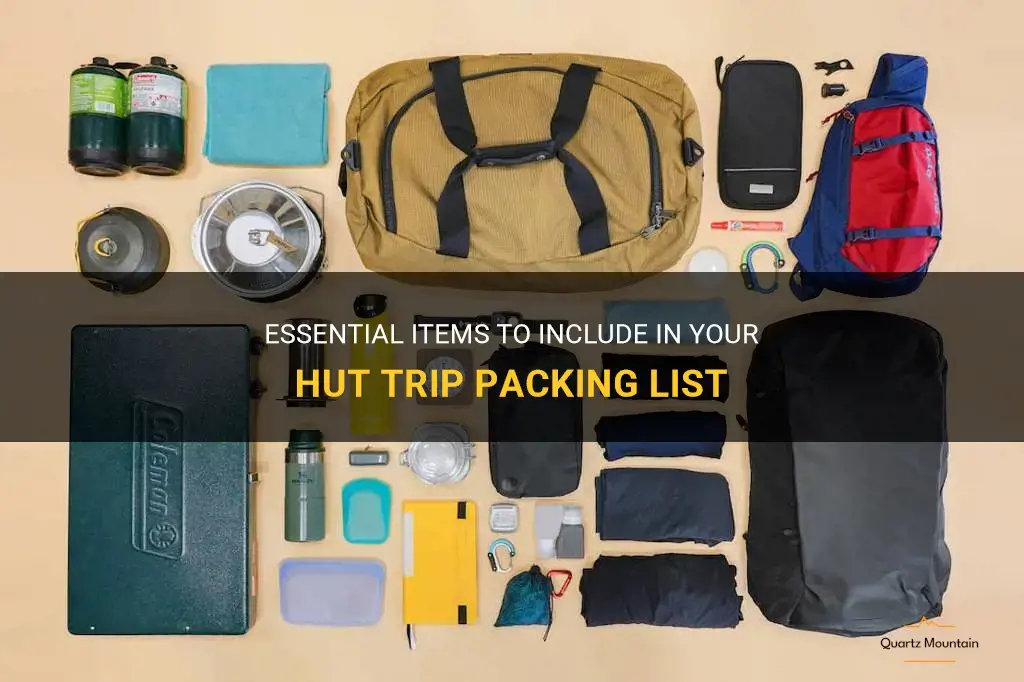
Are you planning a hut trip but not sure what essentials to include in your packing list? Look no further! This article will guide you through the must-have items to make your hut trip a comfortable and memorable experience. From warm layers and sturdy footwear to cooking utensils and safety equipment, we've got you covered. So, grab a pen and paper, and let's start preparing for your next adventure in the mountains!
| Characteristic | Value |
|---|---|
| Food | Non-perishable |
| Water | Sufficient |
| Sleeping bag | Warm and compact |
| Sleeping pad | Insulated |
| Tent | Lightweight |
| Stove and fuel | Portable |
| Cookware | Lightweight |
| Clothing | Layered |
| Navigation | Map and compass |
| First aid kit | Essential items |
| Headlamp | Extra batteries |
| Matches/lighter | Waterproof |
| Multi-tool | Versatile |
| Sun protection | Sunscreen, hat |
| Personal items | Toothbrush, soap |
| Emergency shelter | Space blanket |
| Communication | Cell phone |
| Safety gear | Whistle, rope |
What You'll Learn
- What are the essential items to pack for a hut trip in the mountains?
- Should I bring my own food or is it provided at the hut?
- What clothing should I pack for a hut trip in varying weather conditions?
- Are there any specific gear or equipment requirements for a hut trip?
- What items should I pack for staying overnight in a mountain hut?

What are the essential items to pack for a hut trip in the mountains?
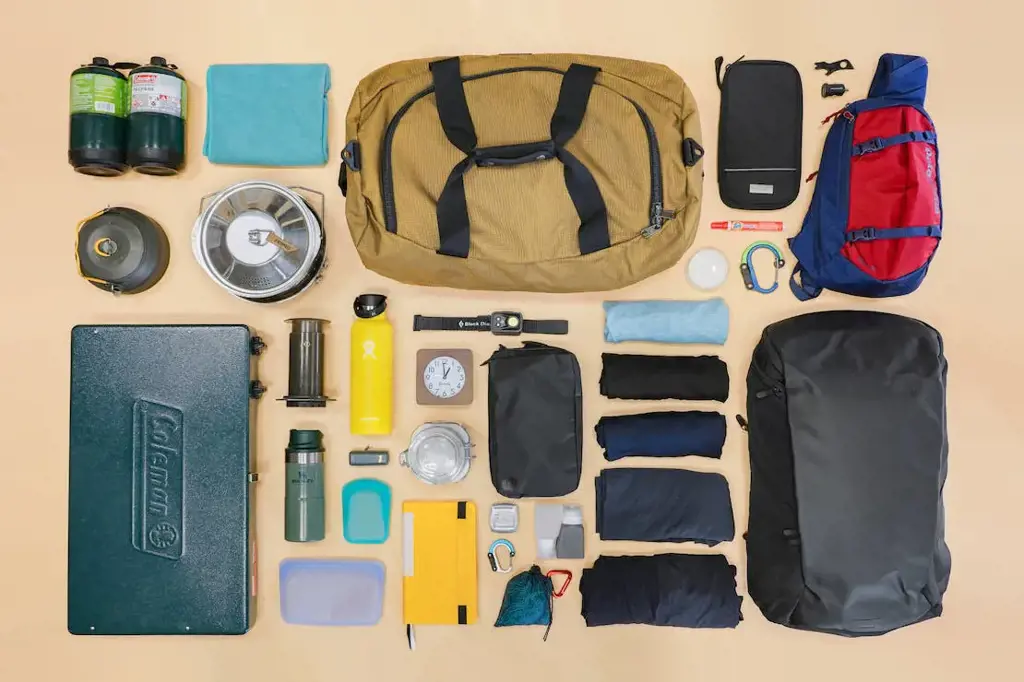
Going on a hut trip in the mountains can be an exciting and adventurous experience. However, it is important to be well-prepared and pack all the essential items to ensure a safe and enjoyable trip. Here, we will discuss some of the crucial items you should consider packing for your hut trip.
- Navigation Tools: When venturing into the mountains, it is essential to have the necessary navigation tools. A compass and a topographic map of the area are vital for orienteering and finding your way around. Additionally, a GPS device can be helpful, but never solely rely on it as they can run out of battery or lose signal.
- Clothing: The right clothing can make or break your hut trip experience. Layering is key to managing your body temperature in the fluctuating mountain weather conditions. Start with a moisture-wicking base layer to keep sweat away from your skin. Over that, wear an insulating layer such as a fleece or down jacket. Finally, have a waterproof and breathable outer layer to shield you from rain, snow, and wind.
- Sleeping Bag and Sleeping Pad: A high-quality sleeping bag and sleeping pad are crucial for staying comfortable and warm during the night in the mountains. Look for a sleeping bag with a temperature rating suitable for the season and location of your hut trip. A lightweight and compact sleeping pad will not only provide insulation from the cold ground but also add a layer of comfort.
- Food and Water: Bring enough food to sustain you during your hut trip. Opt for lightweight and non-perishable items such as dehydrated meals, energy bars, nuts, and dried fruits. Don't forget to pack a stove and the necessary cookware to prepare your meals. Additionally, carry an ample supply of safe drinking water or water purification tablets to treat water from natural sources.
- First Aid Kit: Accidents and injuries can happen, so it is vital to have a well-stocked first aid kit with you. Include items such as bandages, antiseptic wipes, painkillers, blister treatment, and any personal medication you may require. It is also advisable to carry a small manual on wilderness first aid or have some first aid training yourself.
- Lighting Equipment: As the sun sets earlier in the mountains, having a reliable source of light is crucial. Pack a headlamp or flashlight with extra batteries. These will come in handy for navigating around the hut, reading maps, and using the facilities during the night.
- Communication and Safety Devices: It is essential to have a way of staying connected with the outside world, especially in case of emergencies. Consider bringing a fully charged mobile phone, a satellite phone in remote areas, and a whistle to attract attention. Additionally, carrying a personal locator beacon (PLB) or an emergency GPS device can provide extra safety reassurance.
- Emergency Shelter: Although huts provide shelter, it is wise to carry a lightweight emergency shelter like a bivvy bag or a lightweight tent. These can be invaluable if you encounter unexpected situations like extreme weather or an overbooked hut.
Remember, this list is not exhaustive, and you should tailor your packing list based on the specific requirements of your hut trip and the local conditions. Packing the right gear and being well-prepared will help ensure a safe and enjoyable experience in the mountains.
Essential Items for Packing a Baby's Suitcase for a Cruise
You may want to see also

Should I bring my own food or is it provided at the hut?
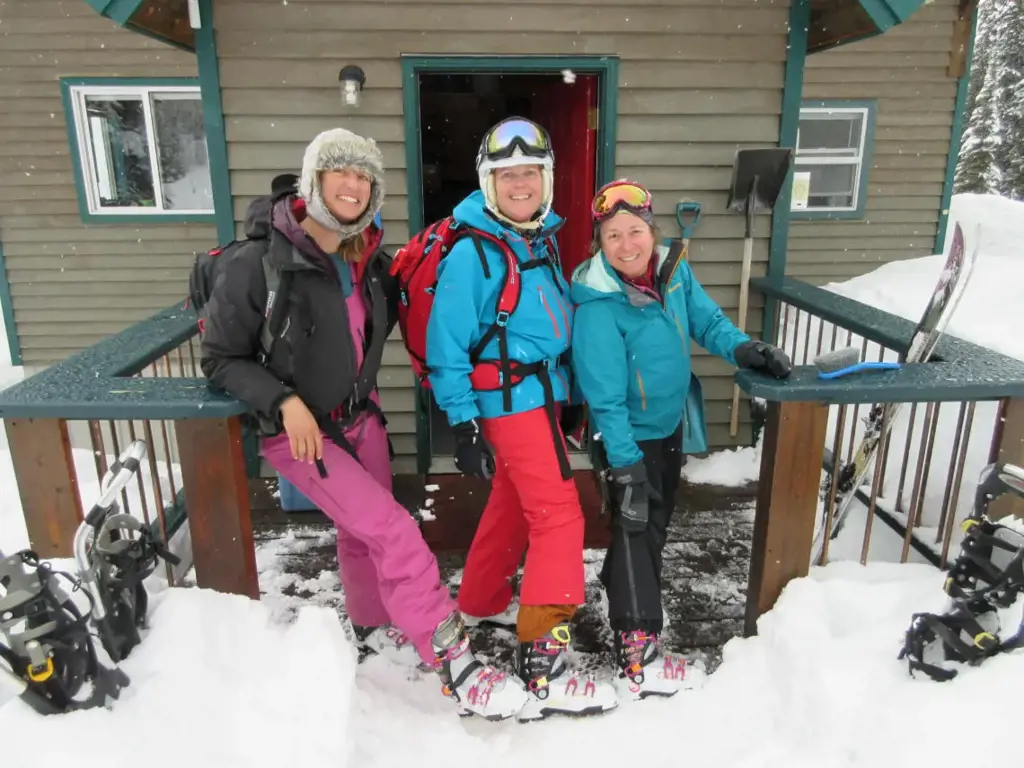
When planning a trip to a mountain hut, one of the common questions people have is whether they should bring their own food or if it will be provided at the hut. The answer to this question can vary depending on the specific hut you are visiting and the arrangements they have in place. In general, it is always a good idea to be prepared and bring your own food, at least as a backup.
Many mountain huts do offer meals for guests, however, the options and availability may be limited. In some cases, the hut may only offer a set menu with a few choices, or they may have limited quantities of certain dishes. Therefore, it is always a good idea to bring some of your own food in case the hut's offerings do not meet your dietary preferences or requirements.
When bringing your own food, it is important to consider the logistics and limitations of the hut. Most mountain huts do not have refrigeration or cooking facilities for guests. Therefore, it is best to bring foods that are non-perishable and require little to no preparation. This can include items such as dried fruit, nuts, energy bars, canned foods, and pre-packaged meals. It is also a good idea to bring plenty of water or a water filtration system, as the hut may not have a reliable water source.
Another factor to consider is the weight and space limitations of your pack. When hiking to a mountain hut, you will likely be carrying all of your belongings on your back. Therefore, it is important to pack light and only bring essentials. Consider the duration of your stay and plan your meals accordingly. It is also a good idea to portion out your food into resealable bags or containers to save space and reduce waste.
In addition to bringing your own food, it is also a good idea to check with the hut beforehand to see if they provide any cooking or dining equipment. Some huts may have communal cooking areas or utensils available for guest use. This can be useful if you want to supplement your own food with items that require cooking, such as pasta or soup. However, keep in mind that these facilities may be limited and in high demand, so it is always best to have a backup plan.
Overall, while some mountain huts do offer meals for guests, it is always a good idea to bring your own food as a backup. This ensures that you have options that meet your dietary preferences and requirements. When planning your meals, consider the logistics and limitations of the hut, pack lightweight and non-perishable items, and check with the hut for any available cooking or dining equipment. By being prepared, you can enjoy your mountain hut experience without worrying about food availability.
The Best Foods to Pack for Your Appalachian Trail Adventure
You may want to see also

What clothing should I pack for a hut trip in varying weather conditions?
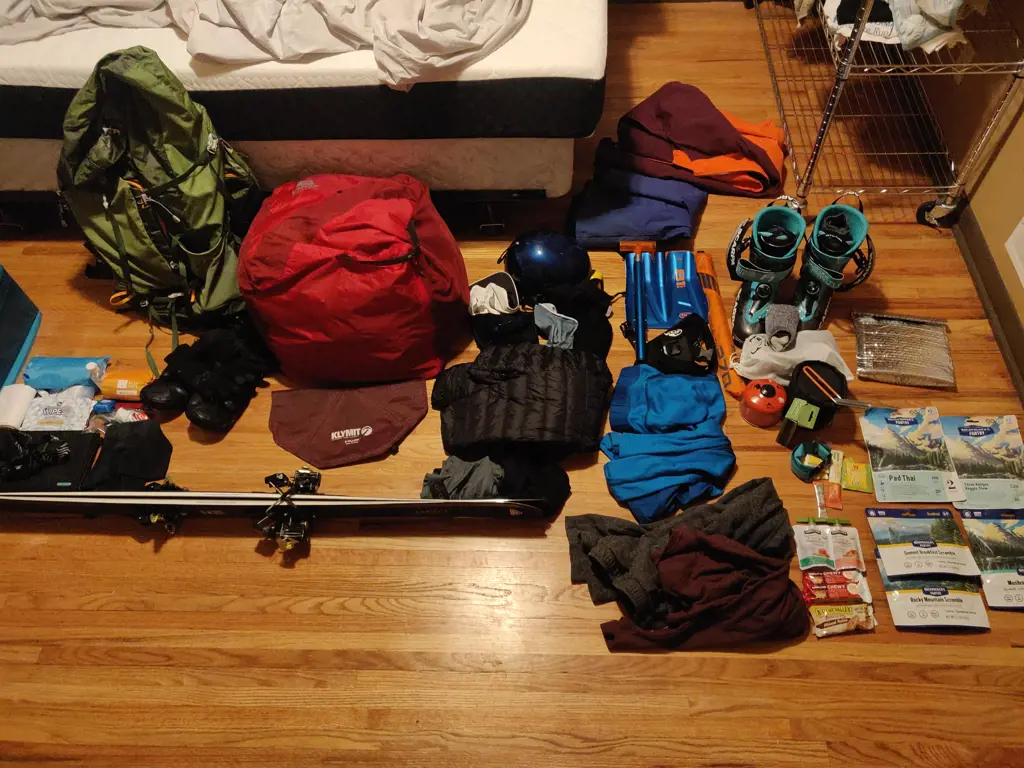
When going on a hut trip in varying weather conditions, proper clothing is essential for staying comfortable and protected. Here are some tips on what to pack for such an adventure.
Layering is key: In changing weather conditions, layering your clothing allows you to adjust your warmth level easily. The three main layers to consider are the base layer, insulation layer, and outer layer.
- Base layer: Opt for moisture-wicking materials such as merino wool or synthetic fabrics as your base layer. These materials help keep you dry by wicking sweat away from your skin.
- Insulation layer: Choose an insulating material like fleece or down for your middle layer. This layer provides warmth by trapping air close to your body.
- Outer layer: The outer layer should be windproof, waterproof, and breathable. A good quality shell jacket and pants made with Gore-Tex or similar materials are ideal for protecting you from the elements.
- Pack multiple options: As the weather can vary greatly in hut trips, it's important to include clothing options for different conditions. For example, bring both lightweight and heavyweight base layers, different weights of fleece or insulated jackets, and a range of hat and glove options. This way, you can adapt to the changing weather conditions easily.
- Don't forget about your extremities: In cold and wet conditions, your hands, feet, and head are particularly susceptible to the cold. Pack waterproof and insulated gloves, multiple pairs of socks, and a hat or beanie to keep them warm and dry.
- Consider the terrain: Take into account the terrain you'll be traversing during your hut trip. If you'll encounter steep inclines, consider bringing gaiters to keep your feet dry and protect your pants from snagging on branches or rocks.
- Pack clothing for relaxation: While you'll be active during your hut trip, there will also be downtime for relaxation. Include comfortable clothing such as sweatpants, t-shirts, and a cozy sweater or hoodie to wear around the hut.
- Test and adjust: Before embarking on your hut trip, test your clothing system in different weather conditions close to home. This helps you determine if you have the right layers and if anything needs adjusting or replacing.
Remember, everyone's comfort level and tolerance for cold can vary. It's important to know your body and pack accordingly. If you tend to get cold easily, pack additional insulation layers or consider investing in heated clothing, such as battery-powered heated jackets or gloves.
In conclusion, packing the right clothing for a hut trip in varying weather conditions is crucial for staying comfortable and protected. Layering, packing multiple options, considering your extremities, and testing your clothing system beforehand will ensure you're well-prepared for any weather that comes your way.
Essential Items to Pack for Traveling with Mom
You may want to see also

Are there any specific gear or equipment requirements for a hut trip?
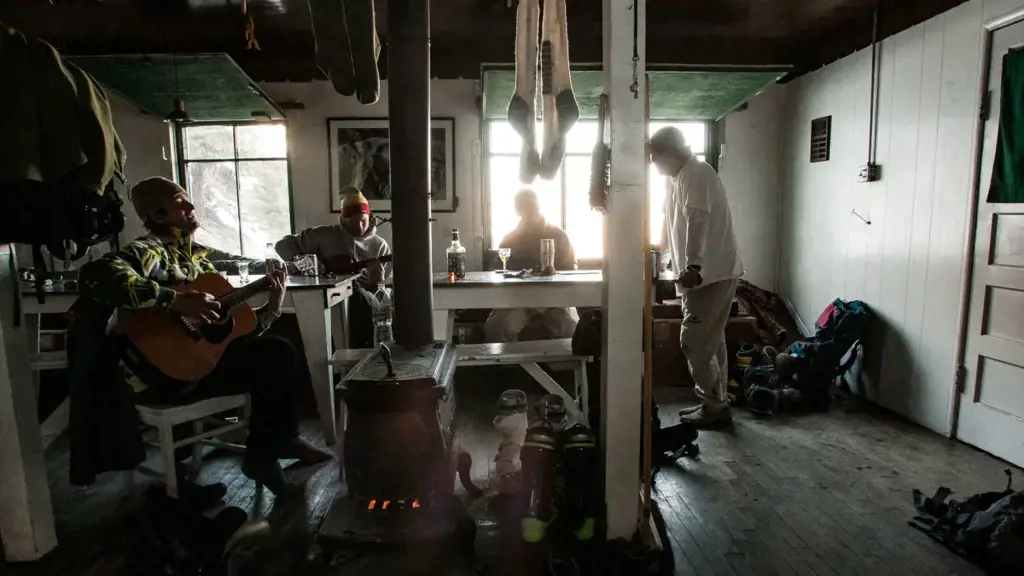
If you're planning a hut trip, it's important to make sure you have the right gear and equipment. A hut trip is a type of backcountry skiing or snowboarding adventure where you stay overnight in a remote mountain hut. These trips can be a great way to explore the outdoors, but they also come with certain risks and challenges. Having the right gear and equipment can help ensure a safe and enjoyable experience.
Here are some specific gear and equipment requirements to consider for a hut trip:
- Backpack: A good backpack is essential for carrying all your gear and equipment. Look for a backpack that is big enough to hold everything you need, but also comfortable to wear. Make sure it has a waist belt and adjustable straps for a secure fit.
- Sleeping bag and sleeping pad: Most huts don't provide bedding, so you'll need to bring your own sleeping bag and sleeping pad. Look for a sleeping bag that is rated for the temperatures you'll be encountering and a sleeping pad that provides enough insulation and comfort.
- Clothing: Layering is key when it comes to outdoor activities, especially in the backcountry. Bring a variety of clothing options, including base layers, mid-layers, and outer layers. Don't forget essentials like hats, gloves, and socks.
- Food and water: Huts often have a kitchen area where you can cook your meals, so bring along food that is easy to prepare and doesn't require refrigeration. It's also important to have a good supply of water, as you may not have access to running water at the hut.
- Avalanche safety gear: Avalanche safety is a top priority in the backcountry. Make sure you have the necessary avalanche safety gear, including a beacon, shovel, and probe. It's also a good idea to take an avalanche safety course before your trip to learn how to properly use this equipment.
- Navigation tools: A compass, map, and GPS device can help you navigate the backcountry and stay on track. Make sure you know how to use these tools before your trip.
- First aid kit: Accidents can happen, so it's important to have a first aid kit on hand. Include basic supplies like band-aids, adhesive tape, gauze pads, and pain relievers.
- Repair kit: It's always a good idea to have a repair kit with you in case any of your gear or equipment gets damaged. Include items like a multi-tool, duct tape, and spare parts for your equipment.
These are just a few of the gear and equipment requirements to consider for a hut trip. It's important to do your research and check with the hut operator for any specific requirements or recommendations. Remember, safety should always be your top priority, so make sure you are prepared and have the right gear for the conditions you'll be facing. Happy hut tripping!
Packing Guide for a Shoebox Appeal: What to Include for a Meaningful Donation
You may want to see also

What items should I pack for staying overnight in a mountain hut?
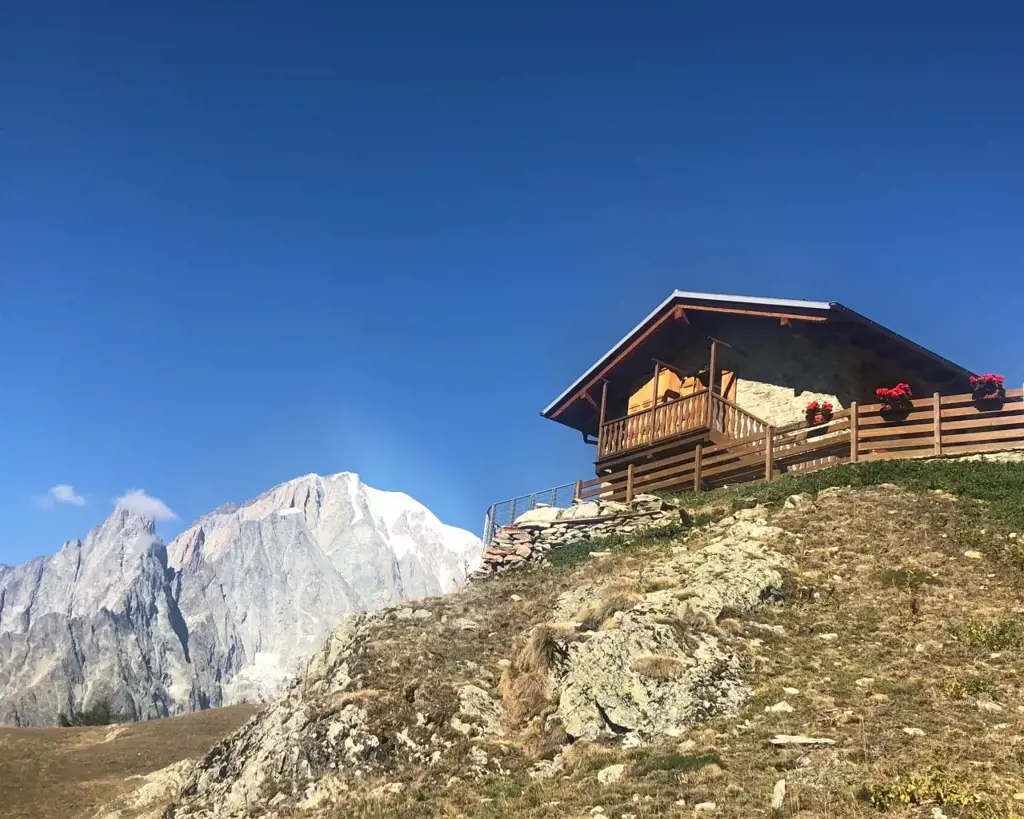
When planning a trip to stay overnight in a mountain hut, it's important to pack the right items to ensure a comfortable and safe experience. Whether you're an experienced hiker or a beginner, being prepared with the right gear can make all the difference. Here is a list of essential items to pack for your overnight stay in a mountain hut:
- Sleeping bag: Most mountain huts provide basic sleeping facilities, but it's always a good idea to bring your own sleeping bag for added warmth and comfort. Choose a sleeping bag that is suitable for the temperature range you expect to encounter in the mountains.
- Sleeping pad: A sleeping pad will provide insulation and cushioning between you and the hard surface of the hut's sleeping area. Look for a lightweight and compact option that is easy to carry.
- Headlamp: A headlamp is essential for navigating around the hut in the dark, especially if you need to use the bathroom facilities or find your way to the kitchen area. Opt for a headlamp with a long battery life and adjustable brightness settings.
- Food and water: While some mountain huts offer food and water for purchase, it's always a good idea to bring your own supply. Pack lightweight and non-perishable foods that are easy to prepare, such as energy bars, dried fruits, and instant noodles. Carry enough water to last you for the duration of your stay, as well as a water filter or purification tablets in case you need to refill from natural sources.
- Cooking equipment: If you plan on preparing your own meals, pack a lightweight camping stove, fuel canisters, and a small pot or pan. Additionally, bring utensils, bowls, and cups for eating and drinking. Remember to clean up after yourself and follow any guidelines set by the mountain hut regarding cooking and washing dishes.
- Clothing: Layering is key when it comes to clothing for a mountain hut stay. Pack a combination of lightweight and warm clothing to accommodate changing weather conditions. It's important to include a waterproof and windproof jacket, as well as a hat, gloves, and a warm beanie for cold nights. Don't forget to pack extra socks and underwear for comfort.
- Personal hygiene items: Bring a small towel, toiletries, and any necessary medication you may need. Mountain huts generally have basic bathroom facilities, but it's advisable to pack your own toilet paper and hand sanitizer just in case.
- Navigation tools: Even if you're staying in a mountain hut, it's always wise to carry a map, compass, and a GPS device or smartphone with offline maps. Familiarize yourself with the route and have a backup plan in case of unexpected changes in the weather or trail conditions.
- First aid kit: Accidents can happen, so it's crucial to have a basic first aid kit with essentials like adhesive bandages, pain relievers, blister plasters, and antiseptic wipes. Additionally, pack any personal medications or medical supplies you may require.
- Cash and identification: While some mountain huts accept credit or debit cards, it's always a good idea to carry some cash in case of emergencies or if card payment is not available. Keep your identification and any necessary permits or passes in a waterproof bag or pouch.
Remember to pack all your gear in a waterproof and durable backpack that is suitable for hiking in challenging terrain. Prioritize lightweight and compact items whenever possible, as you'll be carrying everything on your back during your hike to the mountain hut. By packing the right items and being prepared, you'll be well-equipped for an enjoyable overnight stay in a mountain hut.
Essential Packing Tips for a Vanuatu Holiday
You may want to see also
Frequently asked questions
When packing for a hut trip, it's important to bring the essentials. This includes warm clothing like base layers, a hat, gloves, and insulated jacket. You'll also need sturdy hiking boots or snowshoes, as well as a backpack to carry your supplies. Other items to consider packing include a sleeping bag, headlamp, water bottle, and snacks.
The amount of food you should bring on a hut trip depends on the length of your trip and the amenities available at the hut. Generally, it's a good idea to bring enough food for each day, plus a little extra just in case. Dried and dehydrated foods are lightweight and easy to pack, and can be rehydrated with hot water. Don't forget to pack some snacks for on-the-go energy.
Safety is a top priority when embarking on a hut trip. It's important to bring the necessary safety gear, such as a map and compass, GPS device, or navigation app on your phone. It's also a good idea to pack a first aid kit, emergency shelter, and fire-starting supplies. Additionally, make sure to bring a headlamp, whistle, and a way to communicate with others, such as a fully charged cellphone or two-way radio.







